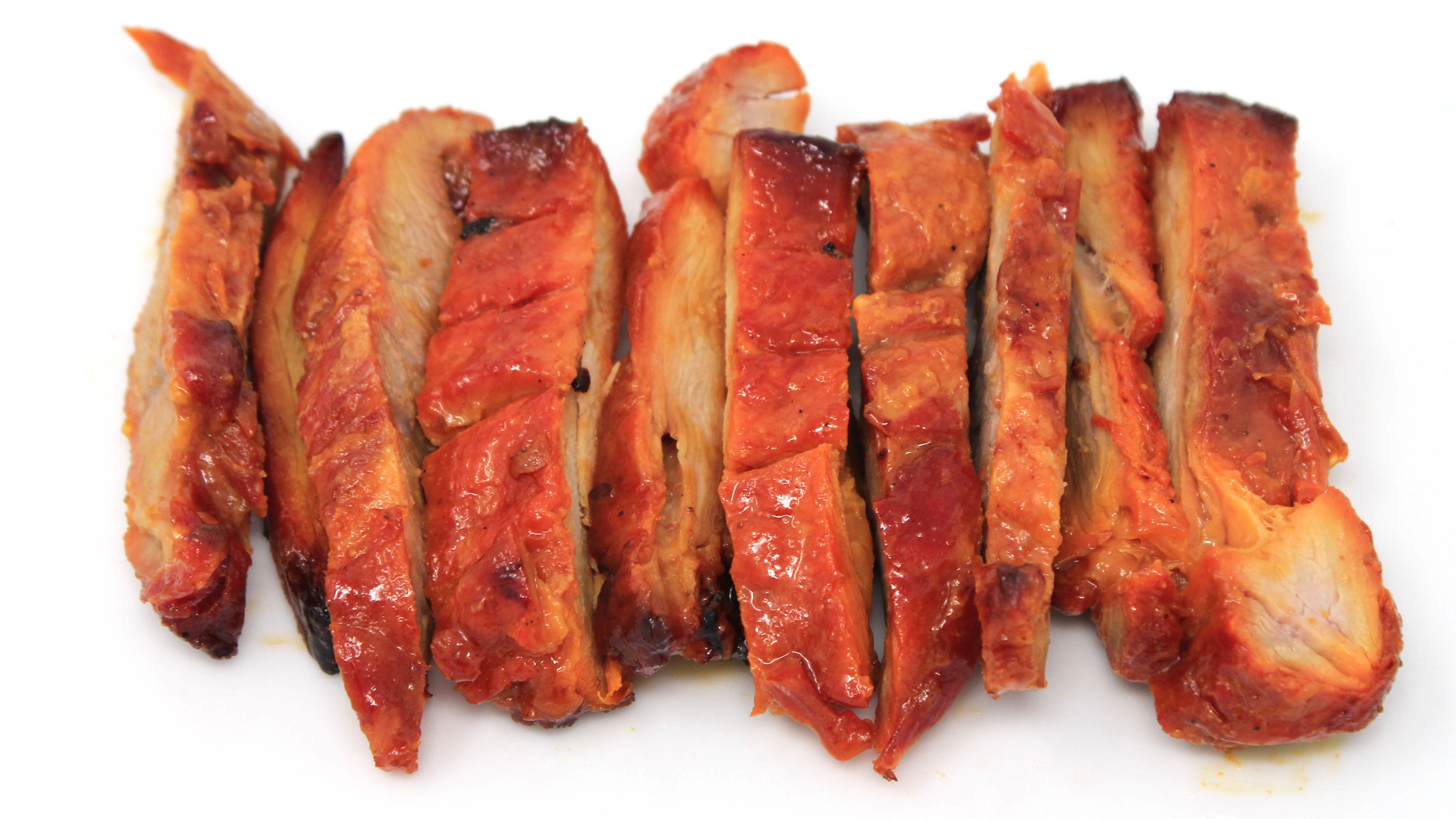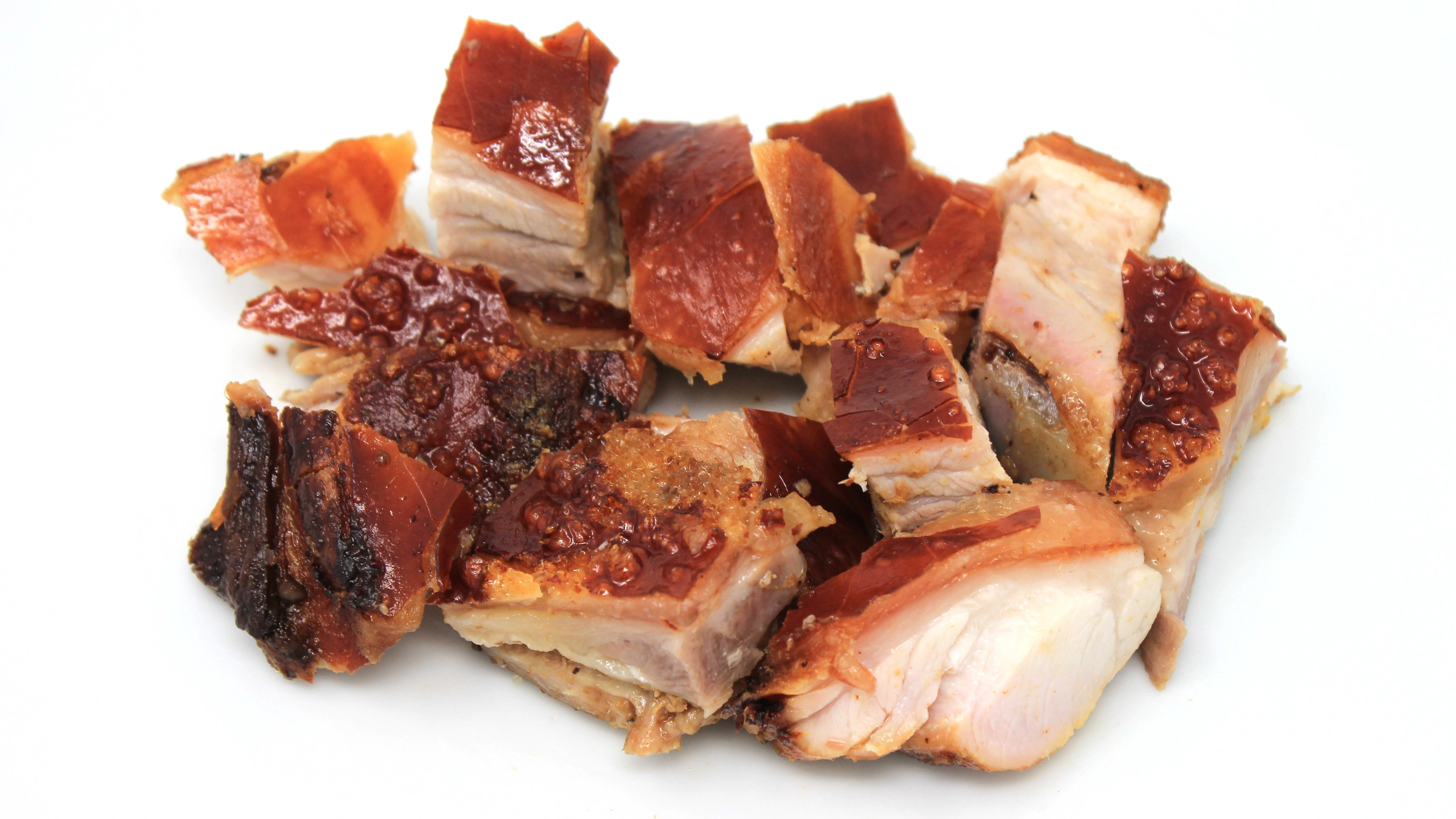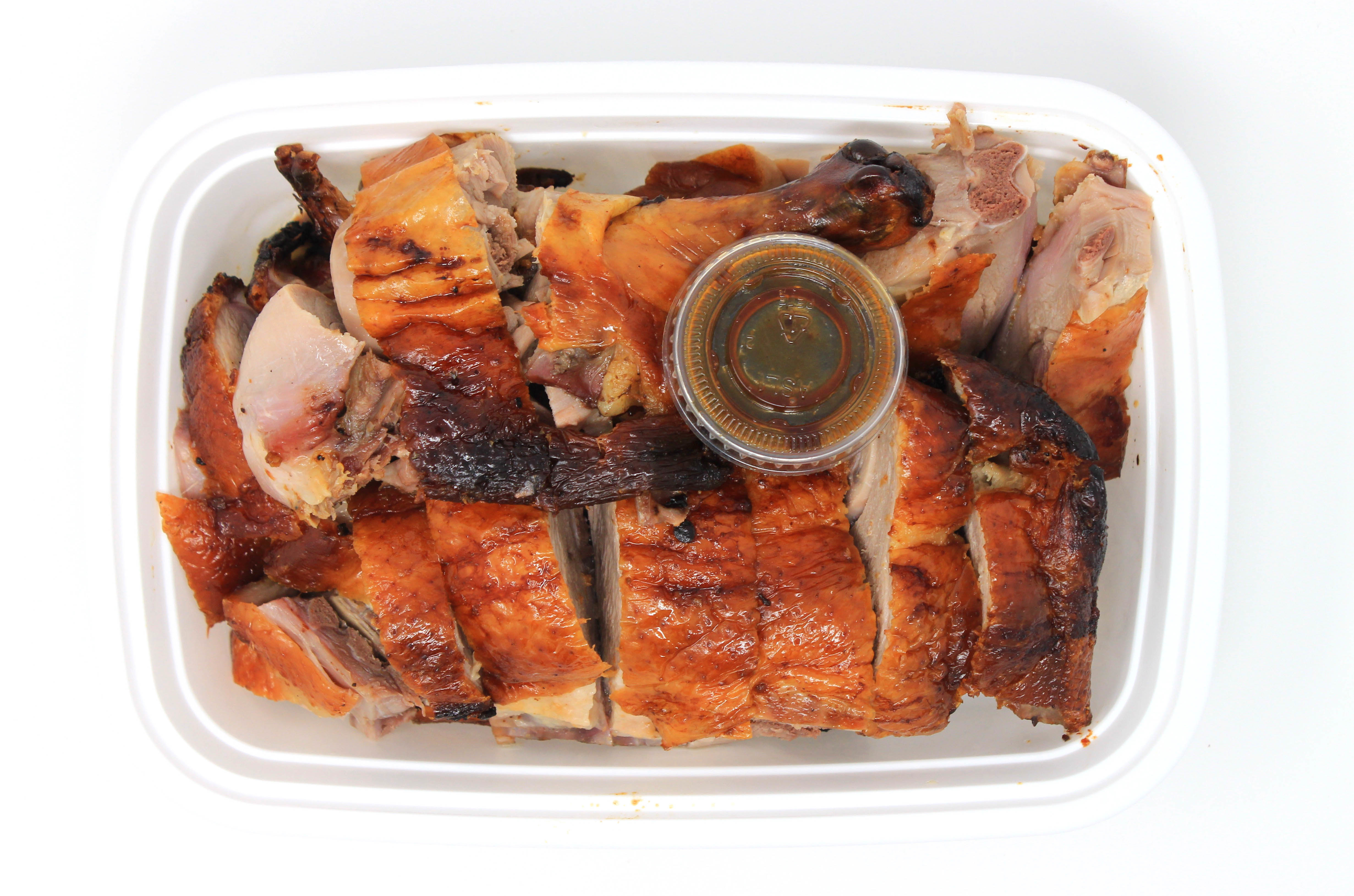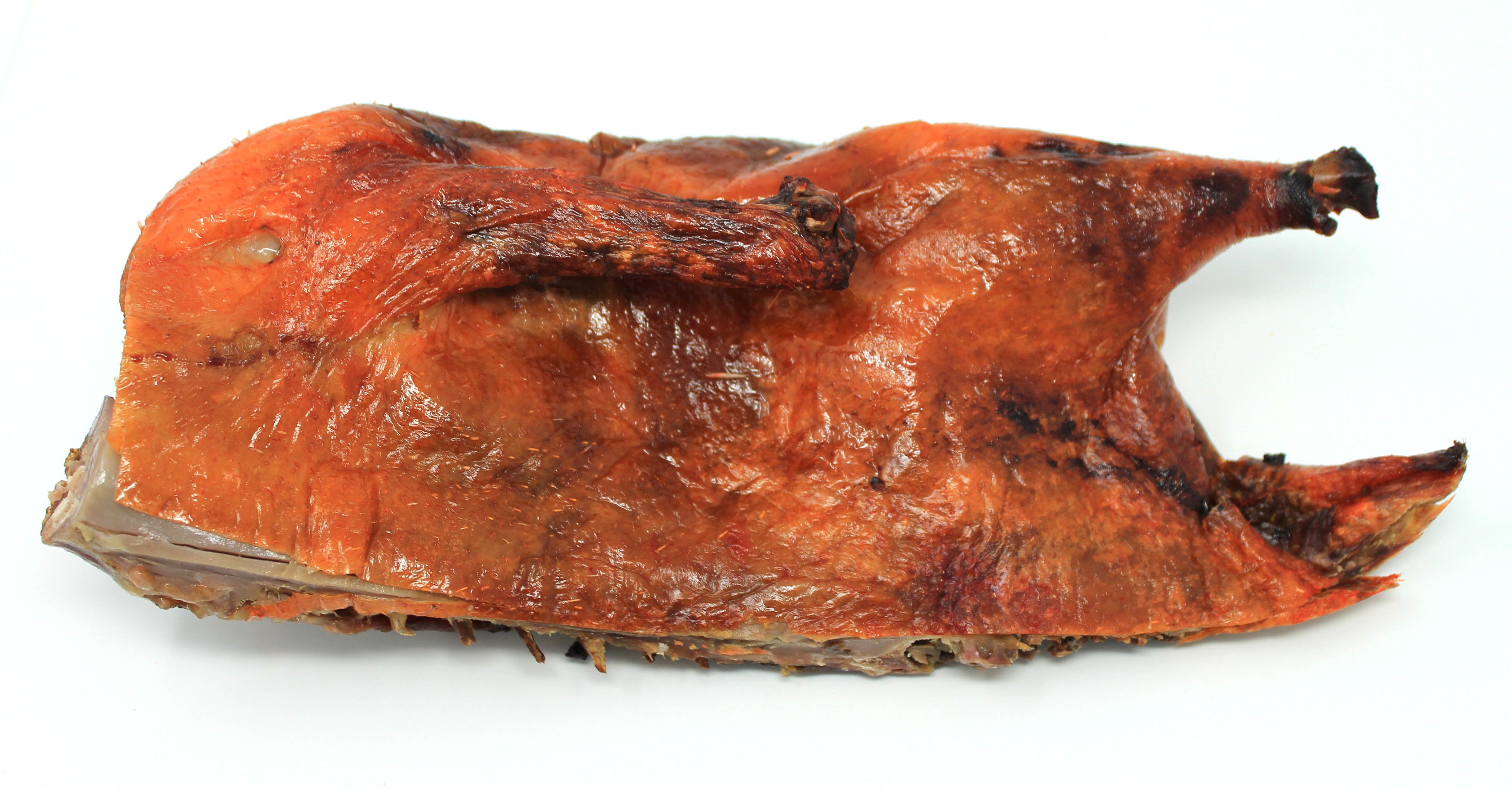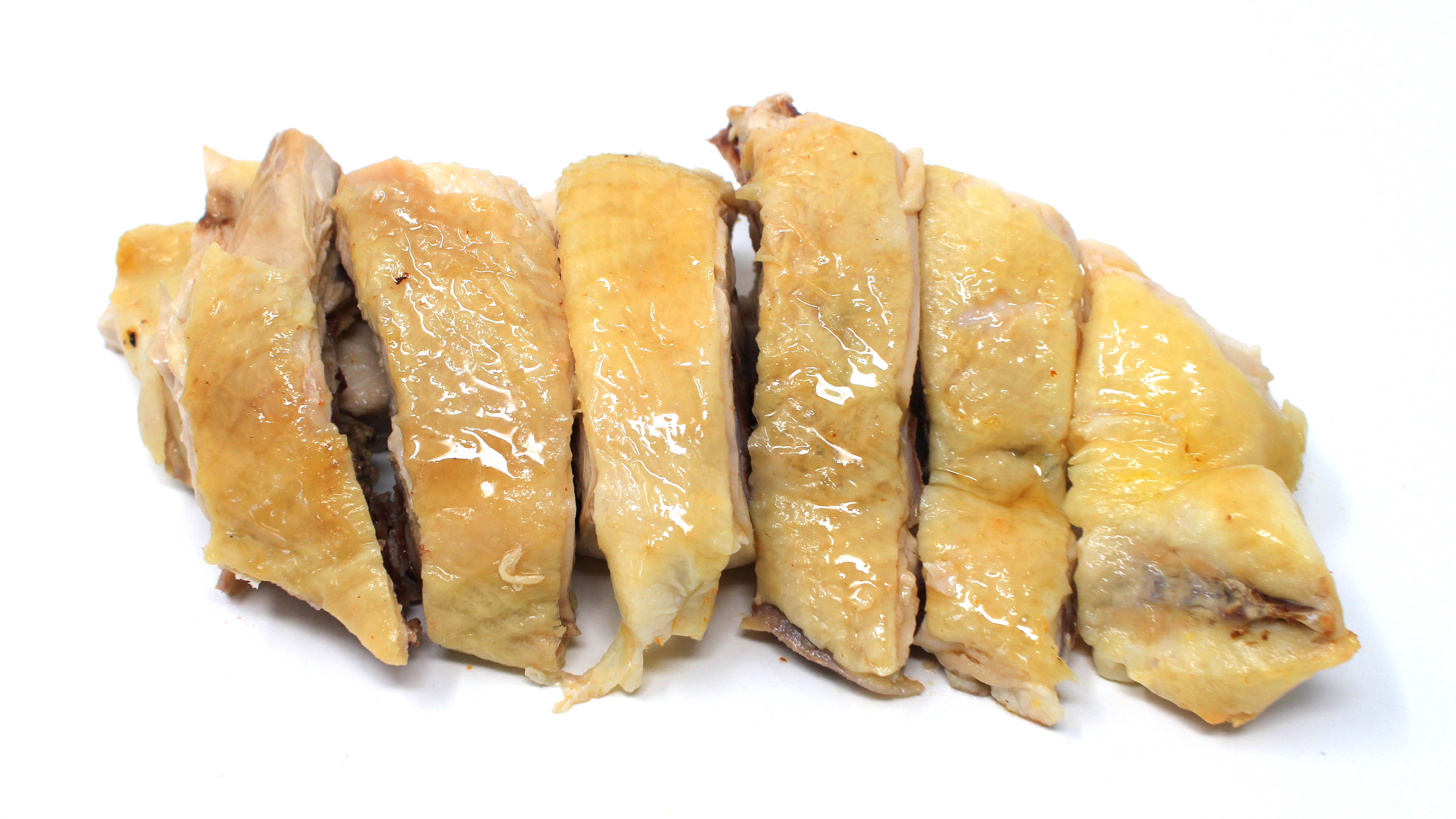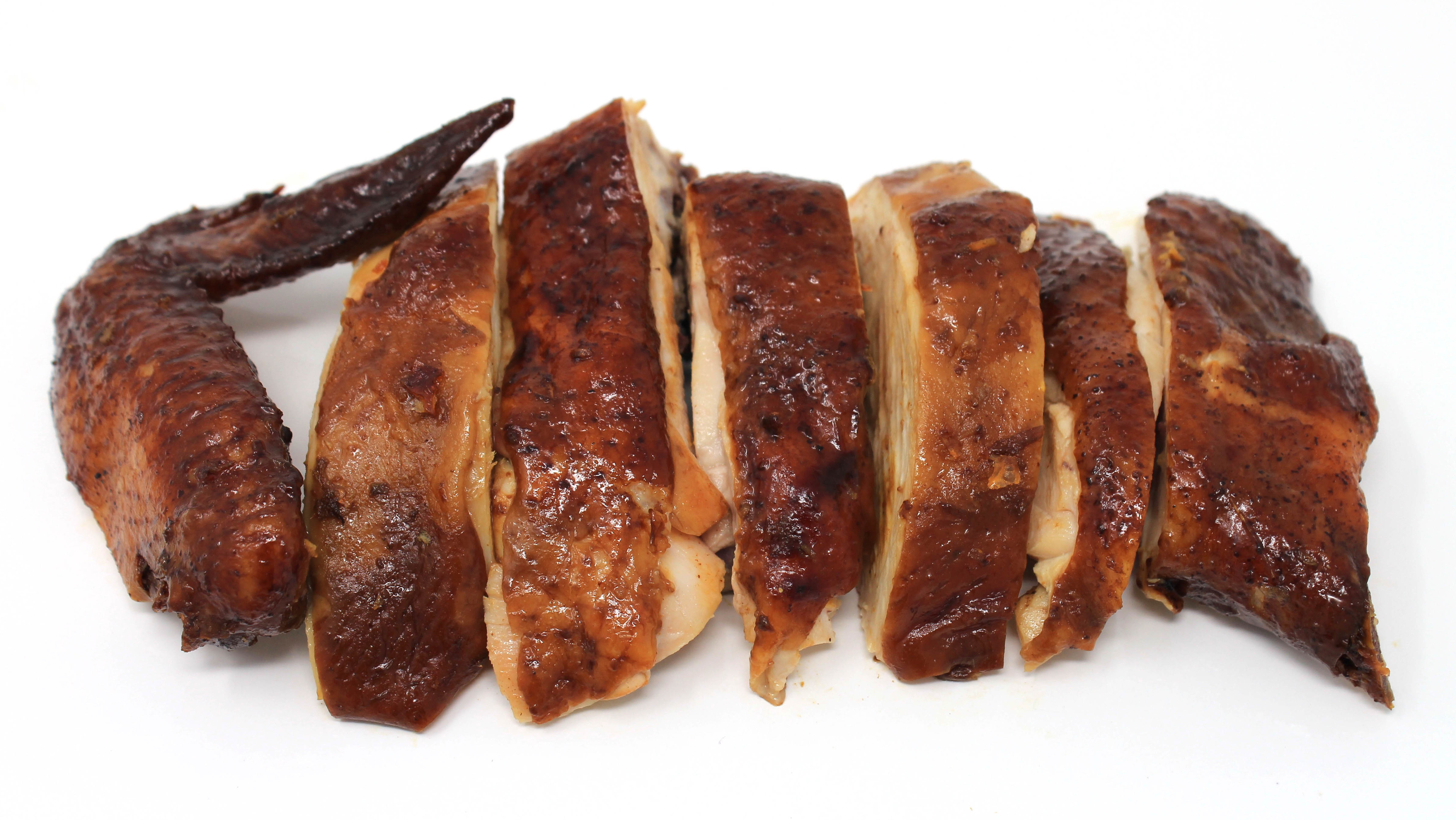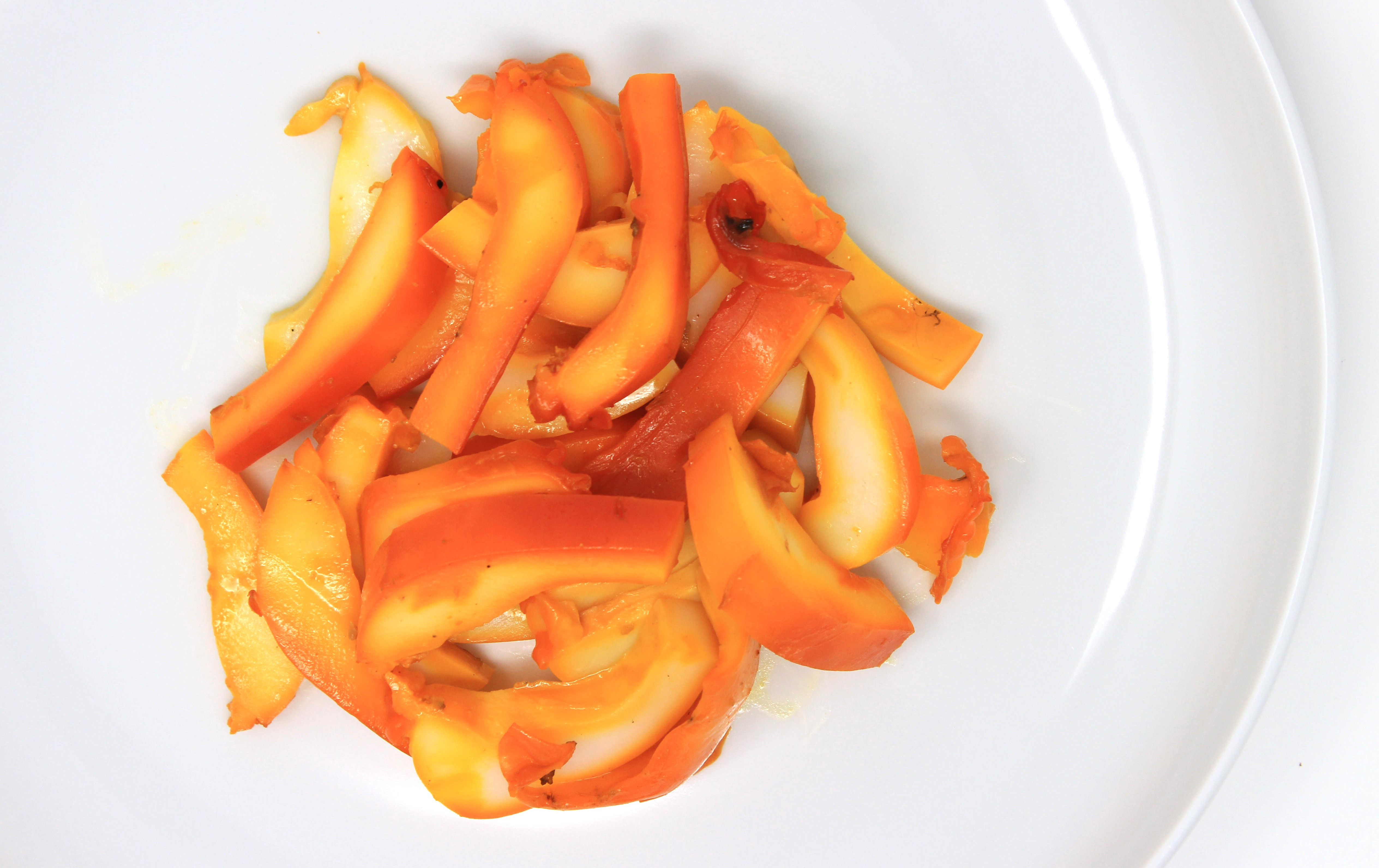The Takeout's Crash Course On Chinese Barbecue
One day, some restaurant in Hong Kong decided to hang ducks—heads on and roasted—in a row by the window. It was a masterstroke of marketing, as other Cantonese roasteries would soon follow. Passersby would be drawn in by the ducks' crisp, glistening, burnished skin. Hanging alongside would be long slabs of pork loin and belly, marinated and roasted to a glossy sheen, dripping with sticky honey glaze. The overhead heat lamps reflecting off the meats gave these restaurants a Marsellus Wallace briefcase-like glow. It's hard to walk past a roastery and not feel compelled to gaze inside.
Chinese barbecue—the genre is called siu mei 燒味 in Cantonese—stimulates the hunger lobe and takes advantage of humans' impulse to window shop. It is not barbecue by the American wood-smoked definition, but blasted with high heat in vertical hanging ovens. And unlike American barbecue, which is treated more as a once-in-a-while indulgence, Chinese barbecue is an everyday, working man's food. As takeout, it beats the gloopy orange chicken or sweet-and-sour pork options any day.
How to order
Chinese barbecue survives on its takeout business. If you're ordering for two people, two proteins plus a starch will usually suffice. There are several starches you could stick with: Steamed white rice is the classic, no-fail accompaniment. You might also consider Hong Kong-style chow mein, which is straggly egg noodles with the slightest touch of chewiness. These noodles can be ordered dry or in a clear broth. (If ordered dry, and you have a few extra minutes back home, try stir-frying it in a wide pan with a splash of peanut oil to get the noodles crisp.)
Sauces are an important consideration. For Westerners, the most familiar condiments will be sweet plum sauce, hoisin sauce, or hot mustard. However, check out ginger-scallion (薑蔥), a savory oiled slurry of minced garlic and green onions that is excellent with plainer proteins, like poached chicken and roast pork, or spooned over rice and crisp noodles. (It's also quite easy to make your own.)
If you're ordering poultry, know that it's generally sold by the whole or half-bird. Pork, the preferred four-legged protein, is sold by weight. Steamed rice is sold by the cardboard carton, and you can specify small or large. I've never seen beef or lamb at a Chinese barbecue.
Also know that the majority of these businesses enforce a credit card minimum. If you're ordering dinner for two, you'll likely cross the $20 threshold, which should more than meet the minimum requirement. As always, cash is king.
Barbecued pork (char siu 叉燒)
There's no dish more popular and accessible to Chinese barbecue than char siu, the sweet and sticky glazed, roasted pork loin. Marinated with garlic, rose wine, fermented bean curd, and five-spice powder, char siu is typically skewered and roasted, then slathered with a honey sauce that gives the pork its high gloss. It's the most versatile of the roastery meats—boneless pork chopped into gum-stick-sized pieces that goes well with rice and fried noodles, or submerged in wonton soup broth without losing its character. Unless you're a Chinese regular, there may be a chance the butcher will smell a newbie and give you the inferior dried-out pieces. Combat that by asking for a mix of "half fat, half lean" (半肥半瘦), a pro move that should alert them you're no Chinese barbecue novice.
Roast pork (siu yuk 燒肉)
It's not as flavor-rich as char siu, but the main appeal with roast pork is its crunchy skin. A whole pig is liberally seasoned (salt, five-spice powder, some even use chicken bouillon powder for umami flavor), then the rind is pricked repeatedly with the needles of a meat tenderizer, so the dermal fat bursts and the skin puffs to chicharron-level crunchiness during roasting. Don't miss out on this: Ask for crunchy skin (脆皮), which should crackle against the molars upon biting down. Finer Chinese barbecue purveyors will present the pig whole, hung on a meat hook. The butcher will then carve a hunk of meat with a cleaver and chop it into bite-sized pieces. As with char siu, asking for "half fat, half lean" (半肥半瘦) will yield a better experience. As the flavor of the meat is relatively plain, roast pork goes great with an aggressive condiment such as hoisin sauce, hot mustard, or even dabbed into a plate of granulated sugar.
Roast duck (siu aap 燒鴨)
Roast goose reigns in Hong Kong, but most Chinese barbecues in the West will opt for the more widely available duck. As with roast pork, the skin—and the meltingly soft layer of subdermal fat—is the star attraction: Some places on the duck are brittle-crisp (the skin near the drumstick); others are thick and fatty (the skin at the center of the thigh and by the tail). For this reason, you'll often find the neck thrown in—just pop out the bone and consume the cylinder of duck skin as is. Compared to pei pa duck (see below), the whole roasted duck tends to have juicier, more tender meat. Cooks will sew the cavity of the duck shut, which allows the marinade and juices to essentially cook inside the bird during roasting. Roast duck and barbecued pork form an exceptional pairing, especially over rice or with noodles in broth. Plum sauce is the natural condiment with roast duck.
Pei pa duck (pei pa aap 琵琶鴨)
Pei pa duck usually bears the same flavor profile as roasted whole duck, except the bird is butterflied and roasted flat. Some call it "banjo duck" or "frisbee duck" because of its shape. Pei pa duck is really for the skin aficionados—it does get slightly more crisp than standard-fare roast duck, but you also lose more of the buttery subdermal fat, and the meat is rendered a touch drier. Roastery cooks have dubbed this a more health-conscious alternative to roast duck, which is relative. Plum sauce is again the ideal accompaniment.
White cut chicken (baakh cheet gai 白切雞)
The preferred way of cooking chicken in Cantonese culture is by poaching, which keeps the meat extraordinarily moist—almost unfamiliarly moist to Western palates. A whole chicken is salted, then dunked in a vat of boiling water with ginger, scallions, and other assorted spicing. What may throw off the uninitiated is that the chicken is chilled and served at room temperature, and the pieces are hacked bone and all, exposing the marrow and other pink matter not associated with Western chicken consumption. For those familiar, part of the pleasure is sticking a whole piece in one's mouth, separating the bone shards from the meat and skin with one's teeth, and slurping the juicy essence in the process. White cut chicken is meant to showcase the bird's natural flavor, which is best accented with a smidgen of scallion-ginger sauce. If you enjoy the unctuousness of rich, flabby chicken skin, with an incomparably juicy meat, this is the dish for you.
Soy sauce chicken (si yau gai 豉油雞)
Soy sauce chicken is poached like white cut chicken, but in a pot of light soy sauce, sweet dark soy, ginger, and star anise. The whole chicken emerges with a dark bronze skin—rich, savory, and more assertive in flavor. Chinese barbecue amateurs may consider soy sauced over white cut as their gateway to poached chicken.
Cuttlefish (mahk yu 墨魚)
Instantly recognizable at 20 paces by its safety cone-orange color, cuttlefish (often interchangeable with squid) is braised in a savory stock that's like a liquid version of hoisin sauce. This, however, doesn't really allow for absorption of much flavor—the taste is of a vague seafood sweetness, and the orange hue is often the result of food coloring, added for aesthetic purposes. The mark of good Cantonese cuttlefish is the tenderness of the pieces, which should yield only the slightest tooth resistance.
